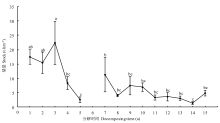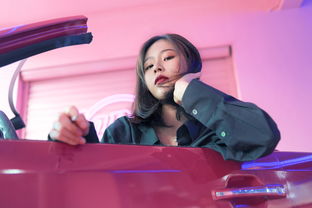Characteristics of Textile Decoration in the Yuan Dynasty
The textile decoration of the Yuan Dynasty (1271-1368) showcases a unique blend of Chinese and foreign styles. Embroidery, particularly floral patterns, was highly valued in this era, with intricate designs often incorporating traditional motifs such as lotus flowers, plum blossoms, and phoenixes. The use of gold thread for embroidery was also common, reflecting the prosperity and wealth of the time. In addition to embroidery, silk fabrics were often used for clothing, with patterns printed on the fabric or sewn directly onto it. These patterns often featured mythological figures, landscapes, and floral designs. Overall, the Yuan Dynasty's textile decoration reflects a rich cultural heritage that has left a lasting impact on subsequent generations.
Introduction: The Yuan Dynasty, spanning from 1271 to 1368 AD, was a period of significant cultural and artistic development in China. Among these, textiles played an essential role as they were not only functional but also served to display wealth, status, and taste. The Yuan Dynasty witnessed the flourishing of textile decoration techniques with unique characteristics that reflect the era’s aesthetics and cultural influences. This article will discuss the key characteristics of the decoration on Yuan Dynastic textiles, illustrated through a table of sample designs.
Textile Materials and Techniques: Yuan Dynasty fabrics were made from silk, cotton, and wool, among other materials. These fabrics were often intricately woven or embroidered with patterns and designs inspired by nature, mythology, and historical events. The weaving techniques varied from hand-knotted silks to intricately patterned cotton cloths. Embroidery became increasingly popular during this period, featuring bold floral patterns, dragon motifs, and scenes from Chinese legends.
Design Elements: The main design elements of the textiles include animals, plants, landscapes, and mythological creatures. Animals such as dragons, deer, and birds were prevalent in the decoration, often depicted with vibrant colors and detailed patterns. Plants like lotuses and plum blossoms featured prominently, symbolizing purity and elegance. Landscape paintings were common, showcasing the beauty of mountains, rivers, lakes, and gardens. Mythological subjects such as the phoenix and the tiger graced the textiles, reflecting a reverence for nature and ancient traditions.

Patterns and Symbolism: Yuan Dynasty textiles displayed a variety of patterns and symbols. For example, dragon and phoenix motifs represented power and strength while lotus flowers symbolized purity and elegance. Other symbols included gold and silver scrolls, which were used to denote social status and wealth. Additionally, some textiles featured calligraphy or seals, indicating the owner's lineage or authority.
Color Palettes: In terms of color palettes, the Yuan Dynasty textiles were rich in hues ranging from deep blues and greens to warm oranges and reds. The use of vivid colors was not just for visual appeal but also symbolized the prosperity and abundance of the ruling class. Color schemes were often harmoniously blended to create a sense of balance and harmony.
Case Studies: One notable example of Yuan Dynasty textiles is the "Silver Lotus" painting. This piece depicts a beautiful lotus flower in a silver frame against a backdrop of lush greenery and flowing water. The intricate details and vivid colors make it a masterpiece of Yuan Dynasty textile art. Another example is the "Golden Dragon" tapestry, which features a magnificent dragon flying above a golden mountain range. The dragon's scales are detailed and shimmering in gold, creating a stunning visual effect.
Conclusion: The Yuan Dynasty's textiles showcased a unique blend of traditional Chinese culture, natural beauty, and artistic expression. Their intricate designs, vibrant colors, and rich symbolism continue to captivate collectors and scholars alike today. By understanding these characteristics, we can gain a deeper appreciation for the craftsmanship and creativity of ancient Chinese artisans.
元代是中国古代纺织品发展史上一个重要的时期,其纺织品纹样特点鲜明,反映了当时的社会风貌和工艺水平,本文将通过表格和案例分析,详细介绍元代纺织品纹样的特点。
元代纺织品纹样概述
历史背景
元代时期,由于社会经济发展和工艺技术的进步,纺织品制作工艺得到了极大的发展,在纹样设计上,注重图案的寓意和象征意义,注重色彩搭配和图案布局的和谐统一。
纹样特点
(1)图案丰富多样:元代纺织品纹样图案丰富多样,包括龙、凤、花鸟、山水等传统图案,同时还有一些具有地方特色的图案。
(2)色彩搭配讲究:元代纺织品纹样在色彩搭配上非常讲究,注重色彩的对比和协调,以达到视觉上的美感。
(3)布局和谐统一:元代纺织品纹样在布局上非常讲究,注重图案的层次感和空间感,以达到和谐统一的效果。
案例分析

元代刺绣纹样
(1)图案:以龙凤花鸟等传统图案为主,同时融入了一些具有地方特色的图案。
(2)色彩搭配:采用鲜艳的色彩搭配,以突出图案的视觉效果。
(3)布局:图案布局规整,层次分明,给人以舒适的感觉。
元代织锦纹样
(1)织造工艺:采用先进的织造工艺,如平纹、凸花等,提高了织物的质量和美观度。
(2)图案:以人物、动物、花卉等为主,同时融入了一些具有地方特色的图案。
(3)材质:采用各种不同的材质,如丝绸、棉麻等,使得织物具有不同的质地和手感。
元代纺织品纹样特点的补充说明
-
工艺特点:元代纺织品制作工艺精湛,采用了多种先进的工艺技术,如织造、绣制、印花等,还注重对材料的运用和搭配,使得织物具有不同的质地和手感。
-
色彩搭配:元代纺织品在色彩搭配上非常讲究,注重色彩的对比和协调,还注重运用一些具有象征意义的色彩,以表达吉祥、富贵等寓意。
-
图案寓意:元代纺织品纹样在图案寓意上非常丰富多样,注重表达吉祥、富贵等寓意,还注重运用一些具有地方特色的图案,以展现当地的文化特色。
元代纺织品纹样特点鲜明,体现了当时的社会风貌和工艺水平,在工艺、色彩搭配和图案寓意等方面都表现出独特的优势和特点,未来随着时代的发展和工艺技术的进步,元代纺织品纹样将继续发扬光大,为人类文化传承和发展做出更大的贡献。
Articles related to the knowledge points of this article:
杰丽佳纺织品 A Global Brand with a Heart
Navigating the Global Market with Nantong Jinmen Textiles
The Ultimate Guide to Choosing the Best Materials for Your Fashion Needs
The Unparalleled Luxury of 腾翔印花纺织品
Suzhou Xinying Textiles:Navigating the Global Fashion Industry
A Journey into the World of Fabrics with Laughing Leaf Textiles



